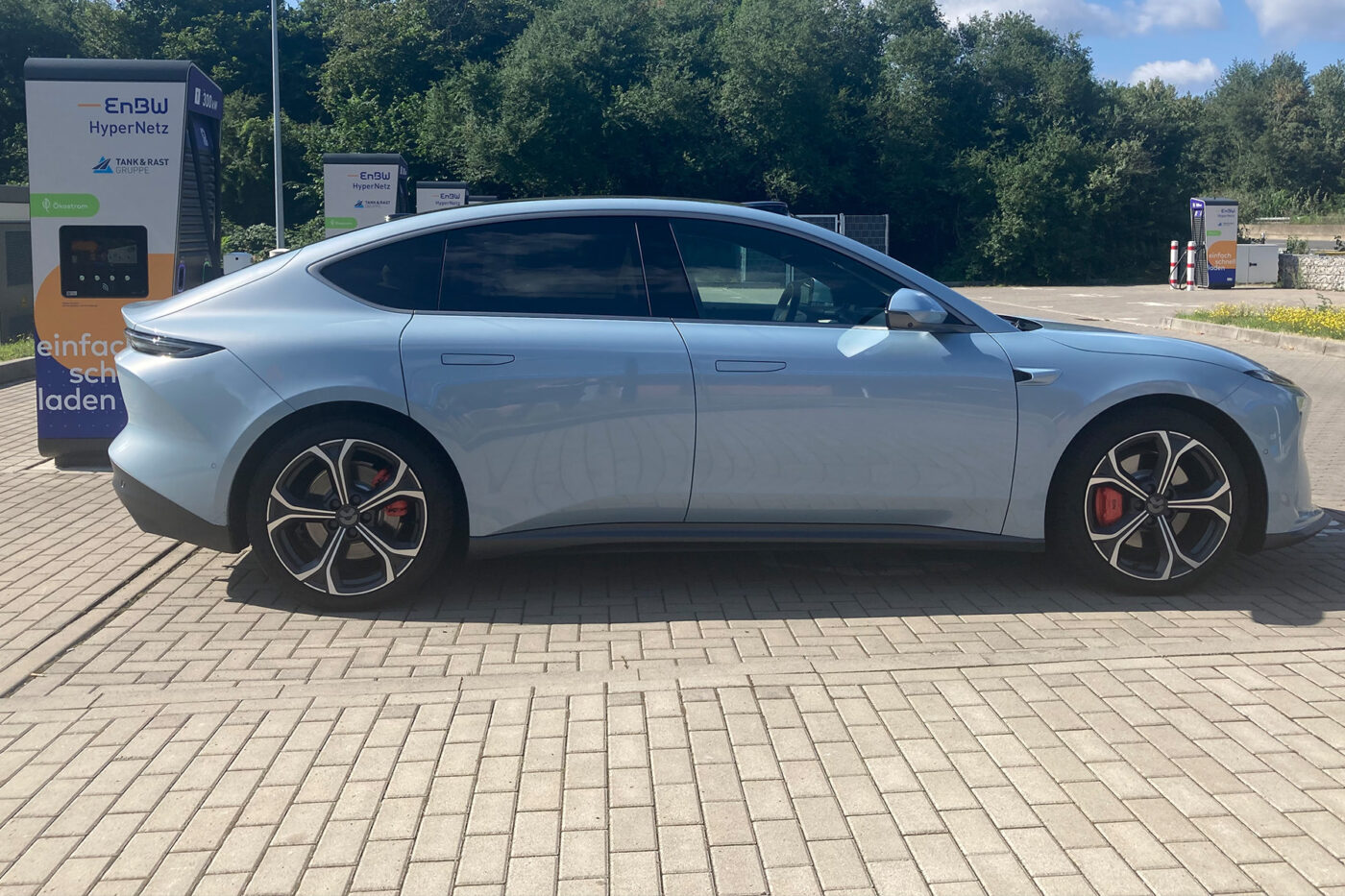
Putting the Nio ET5 to the test
Six minutes and 32 seconds. That’s how long the battery swap took during our test in Hilden, Germany – from when the system takes over automatically when the car enters the station to when the EV is released to leave the station again (manually). No charging process is that fast and won’t be in the foreseeable future.
However, in practice, your charge break will likely take longer than those 6:32 minutes. Because unless you’re lucky enough to have one of the Nio Power Swap Stations, which are rare in Germany, along your daily commute, you’re more likely to use the battery swap for long distances. And since you have to remain seated in the vehicle during the swap process, you can only go to the restroom afterwards (or optionally before). In our test in Hilden, the whole process, including a short visit to the local bakery, took 17 minutes. A Hyundai Ioniq 6 could have been charged in the same amount of time – and we could have visited the restroom and bought food in the meantime.
Yes, the Ioniq 6 would only have been charged to around 80 per cent during this period. However, it must also be mentioned that the Nio system indicated that several 100-kWh batteries with 100 per cent charge levels were in stock at the station when we arrived. After the battery swap, however, the test car only displayed a charge level of 90 per cent.
The large battery offers almost 500 kilometres of range
The test car is a light blue ET5 with beige leather seats. The drive has an output of 360 kW, and the optional 100 kWh battery with NMC cells is mounted in the underbody of the test car. The basic version has the same power, but a 75 kWh battery consisting mainly of LFP cells. An NMC cell module is installed in each of the four corners of the battery pack, serving as a power buffer. The WLTP range is 456 kilometres.
With the large battery, it is even up to 590 kilometres. With our test consumption of 20.4 kWh/100 km on average, the calculated range is 490 kilometres – with a little downward buffer (unless you like to roll up to the charging station with zero per cent), probably between 450 and 480 kilometres. 400 kilometres non-stop should also be possible on a pure motorway trip. With a bit of driving to and from the motorway to the Power Swap Station (PSS), the journey can continue with a perhaps ten-minute delay. If your bladder can take it.
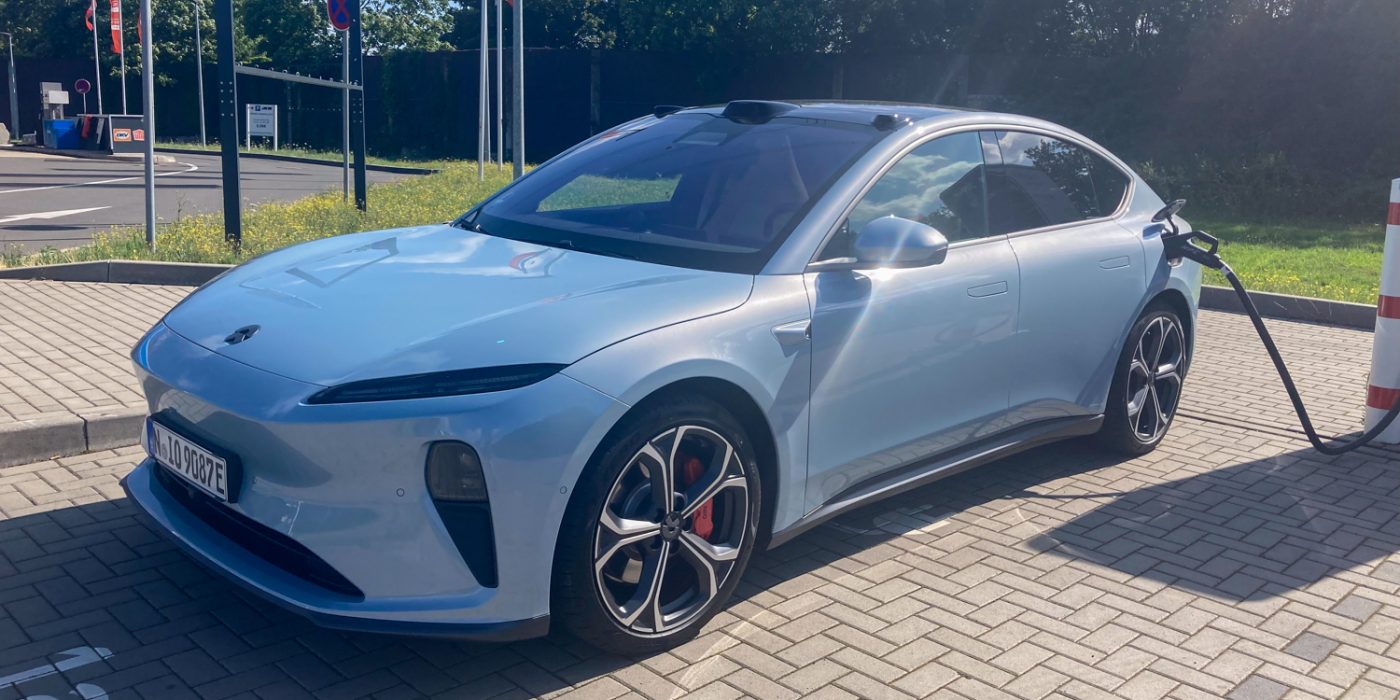
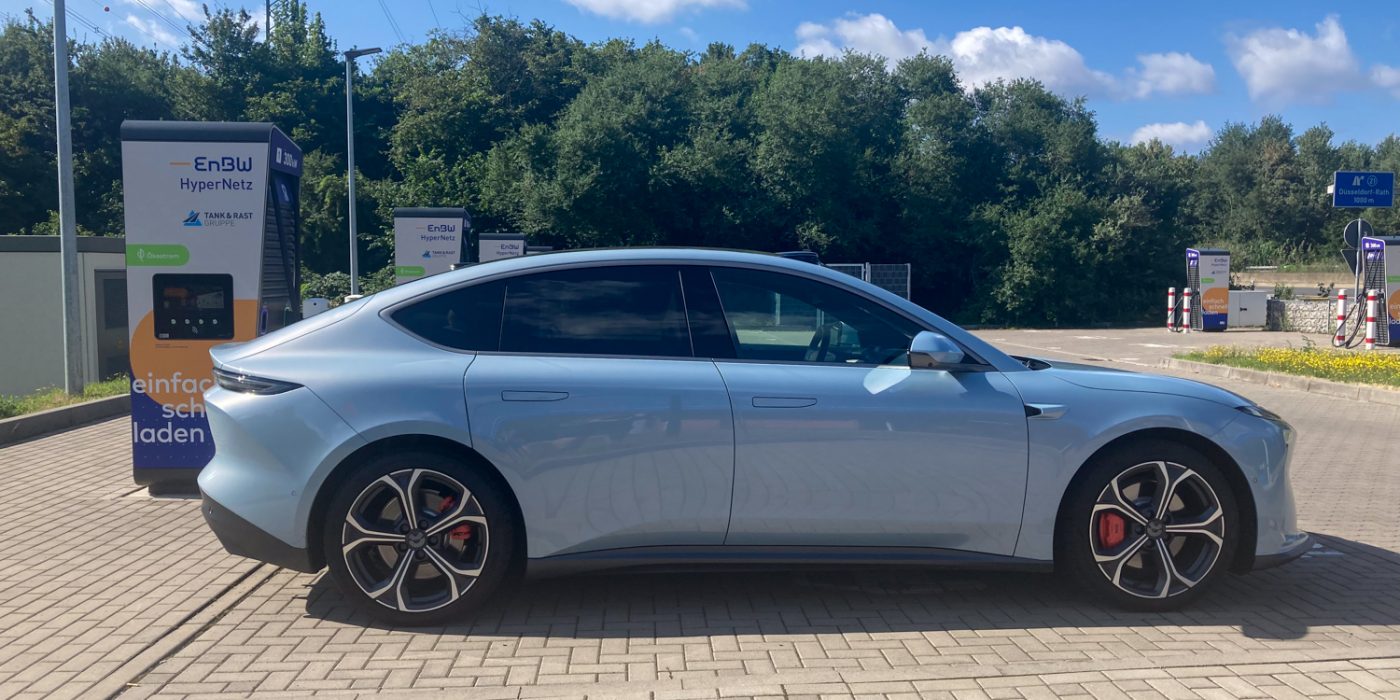
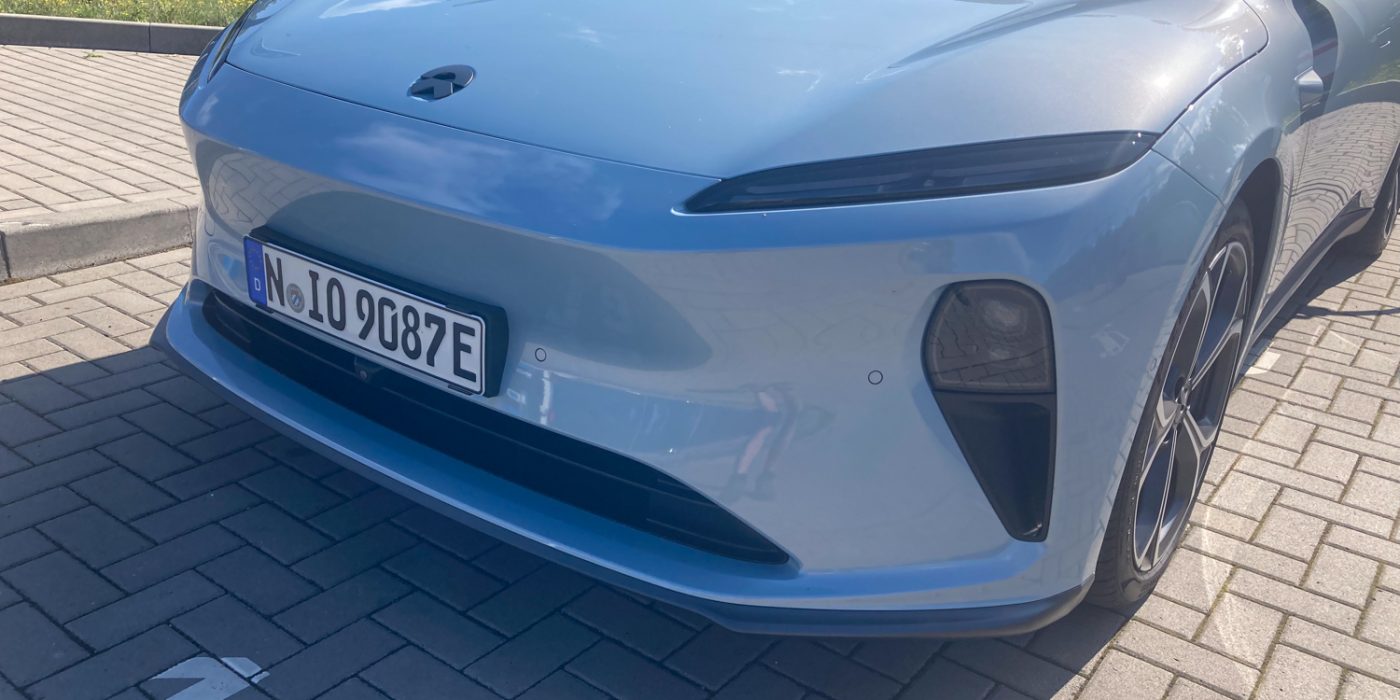
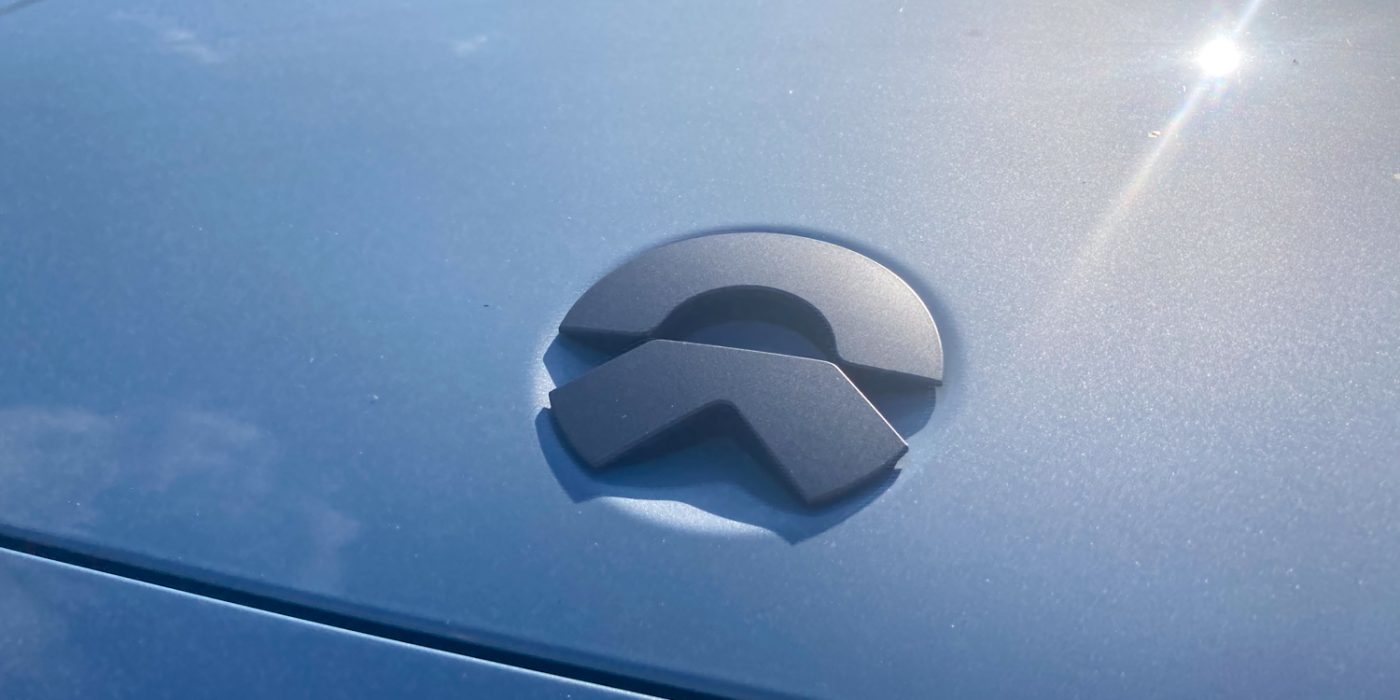
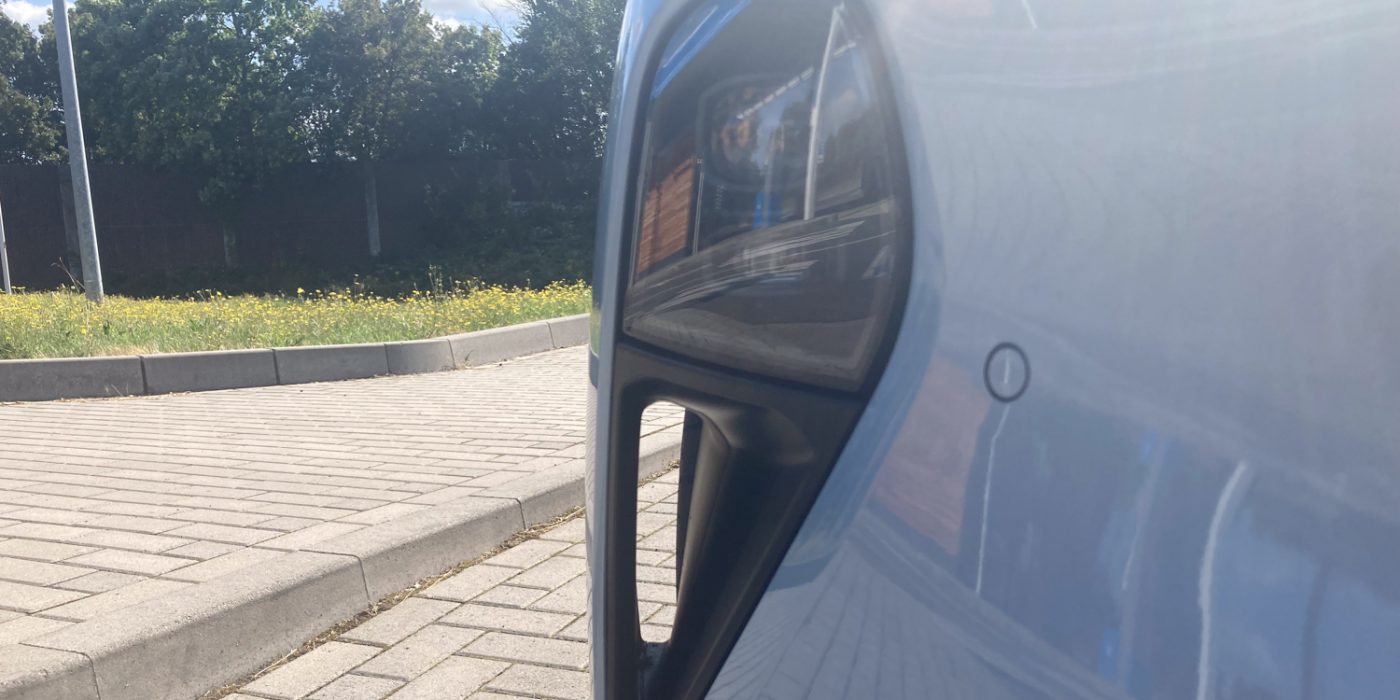
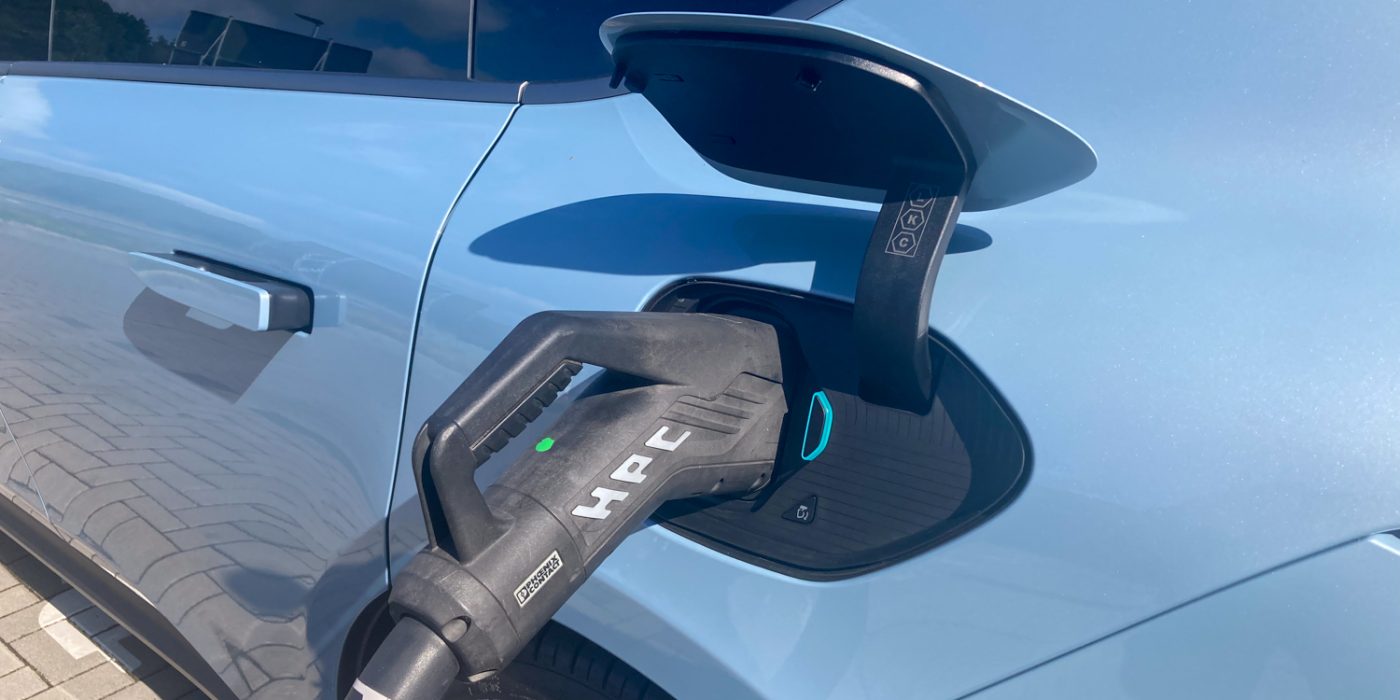
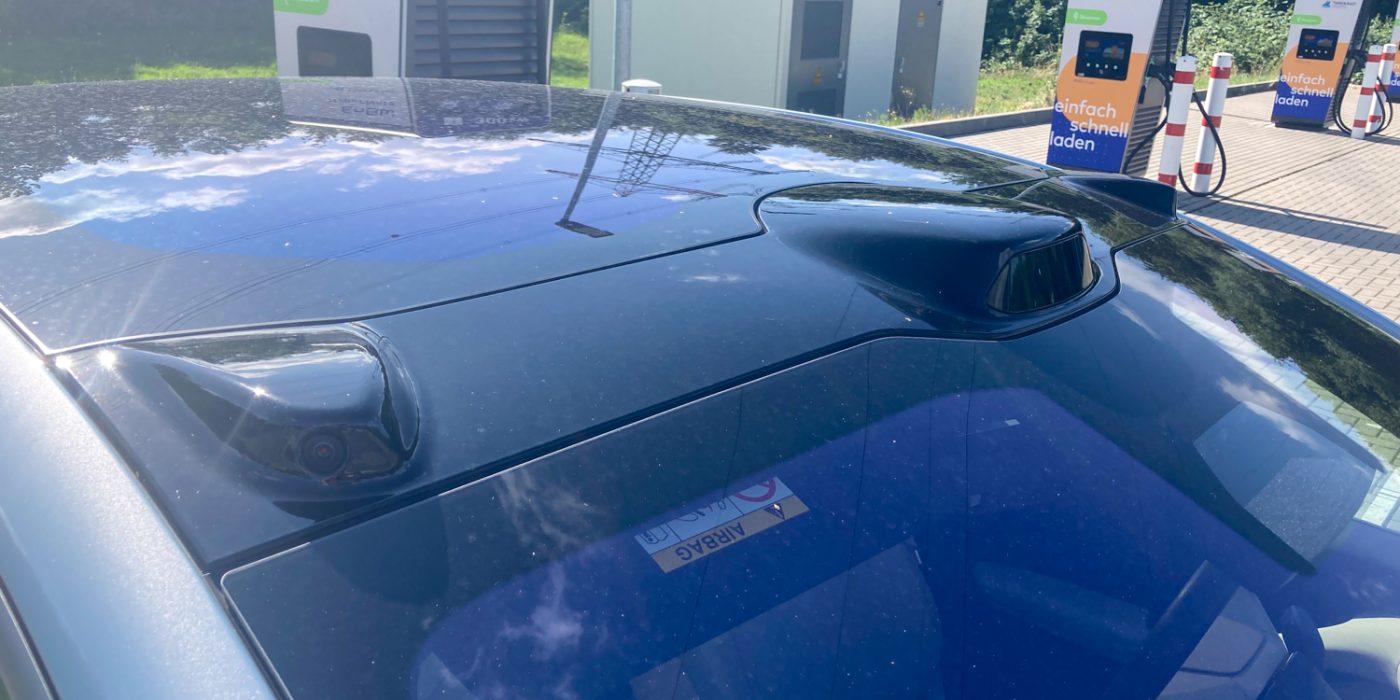
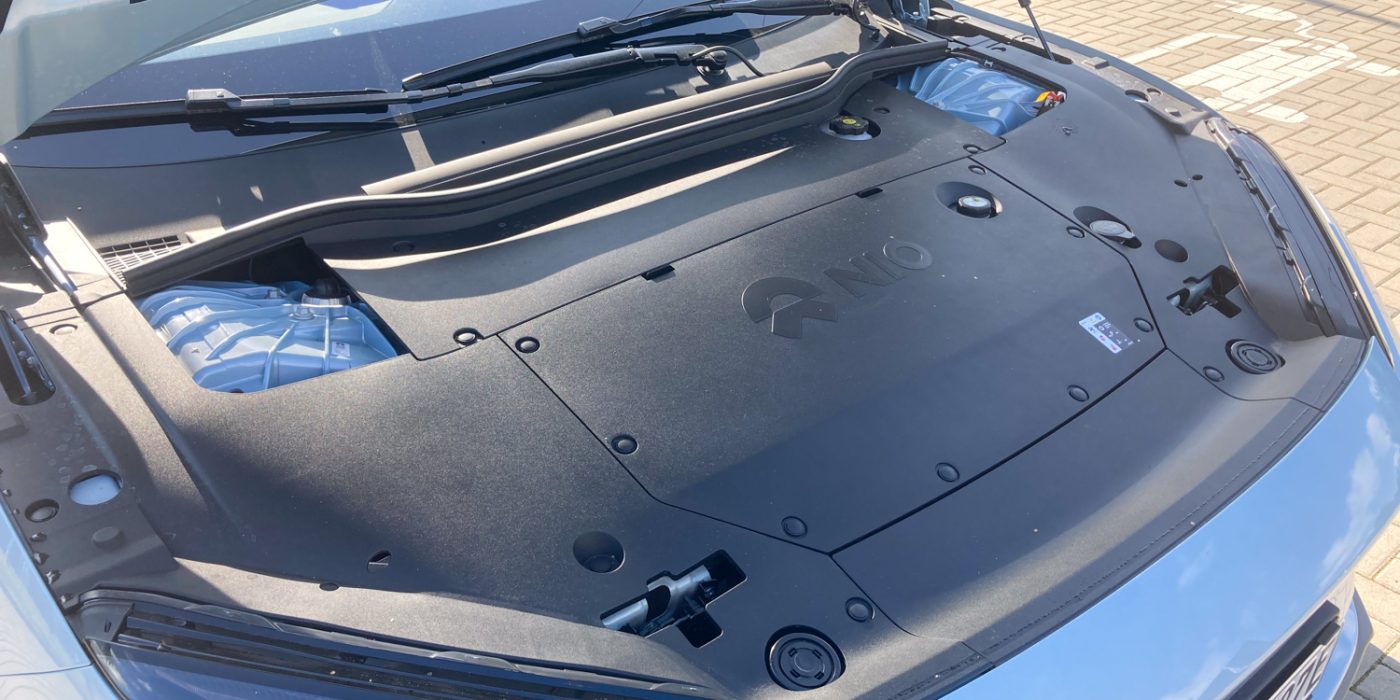
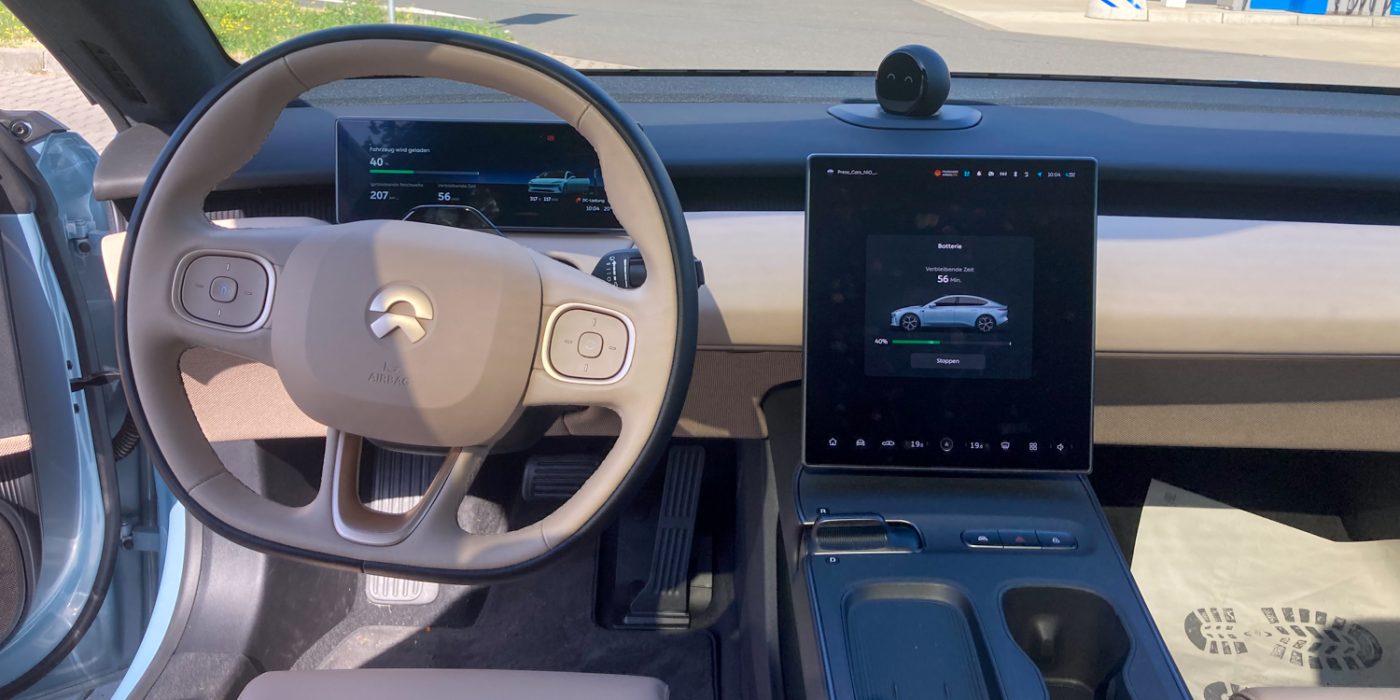
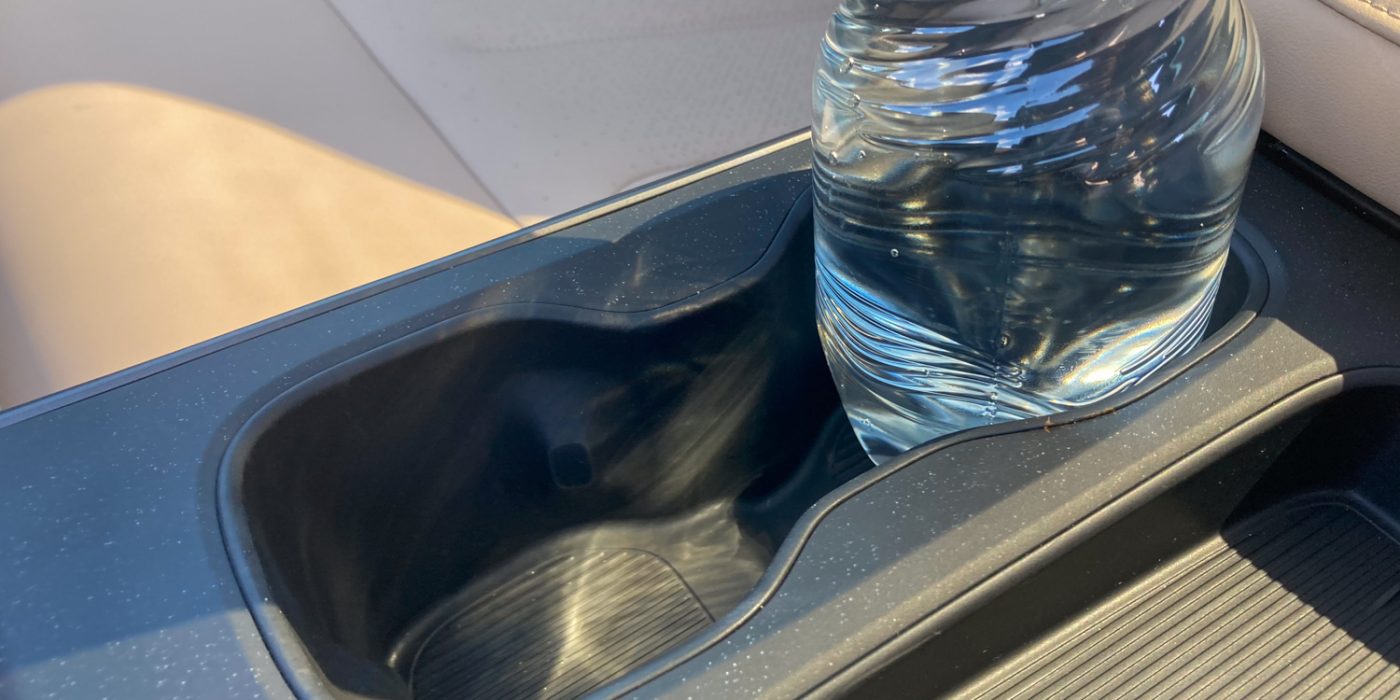
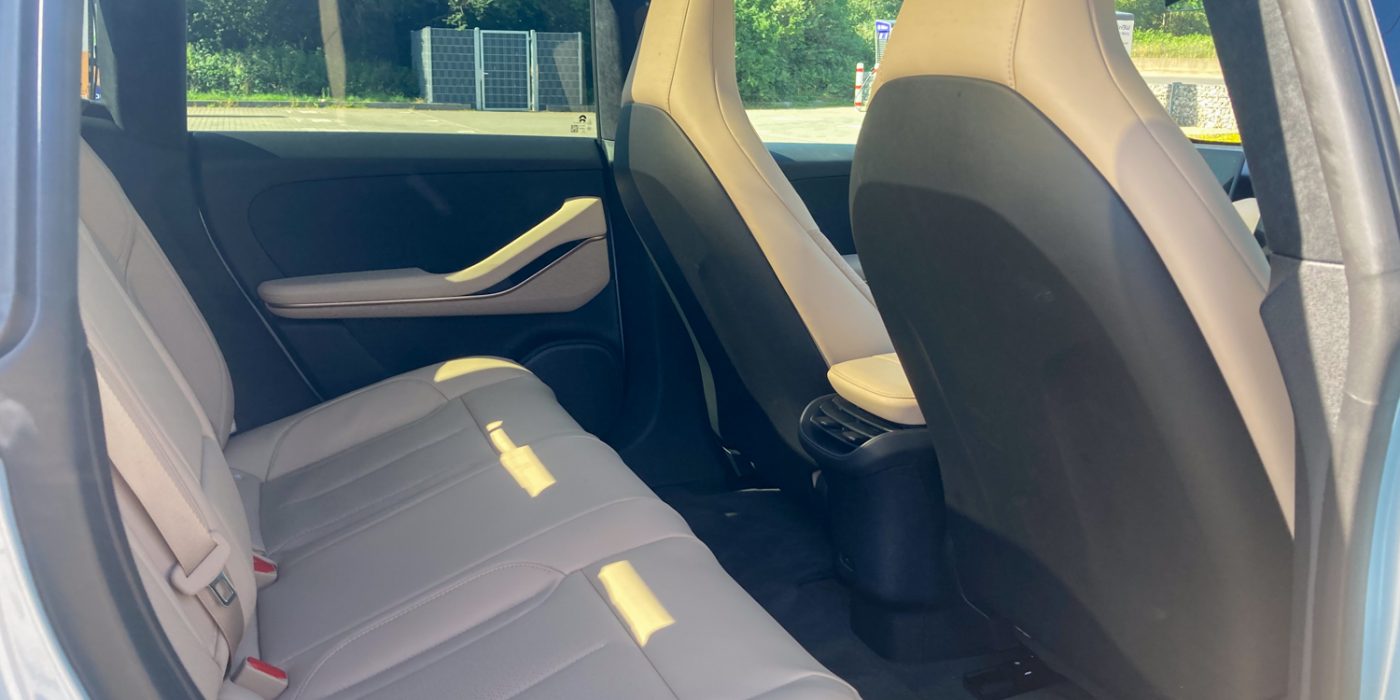
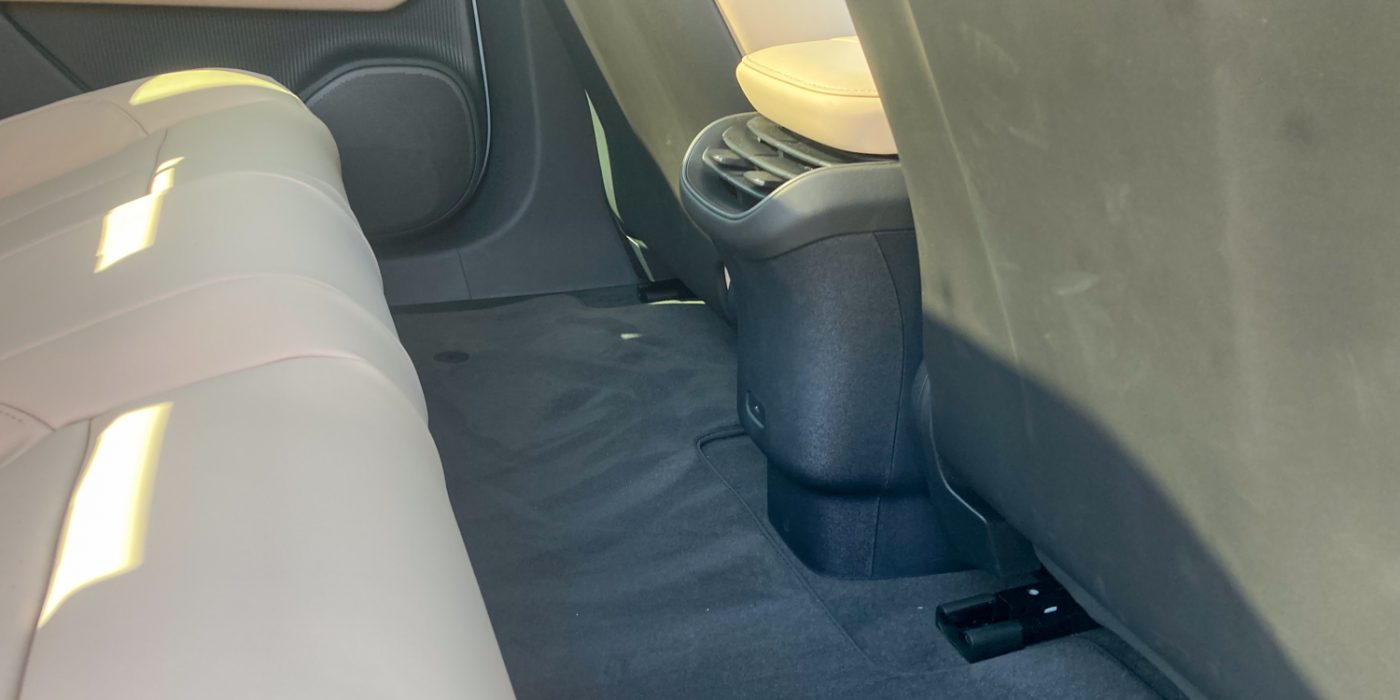

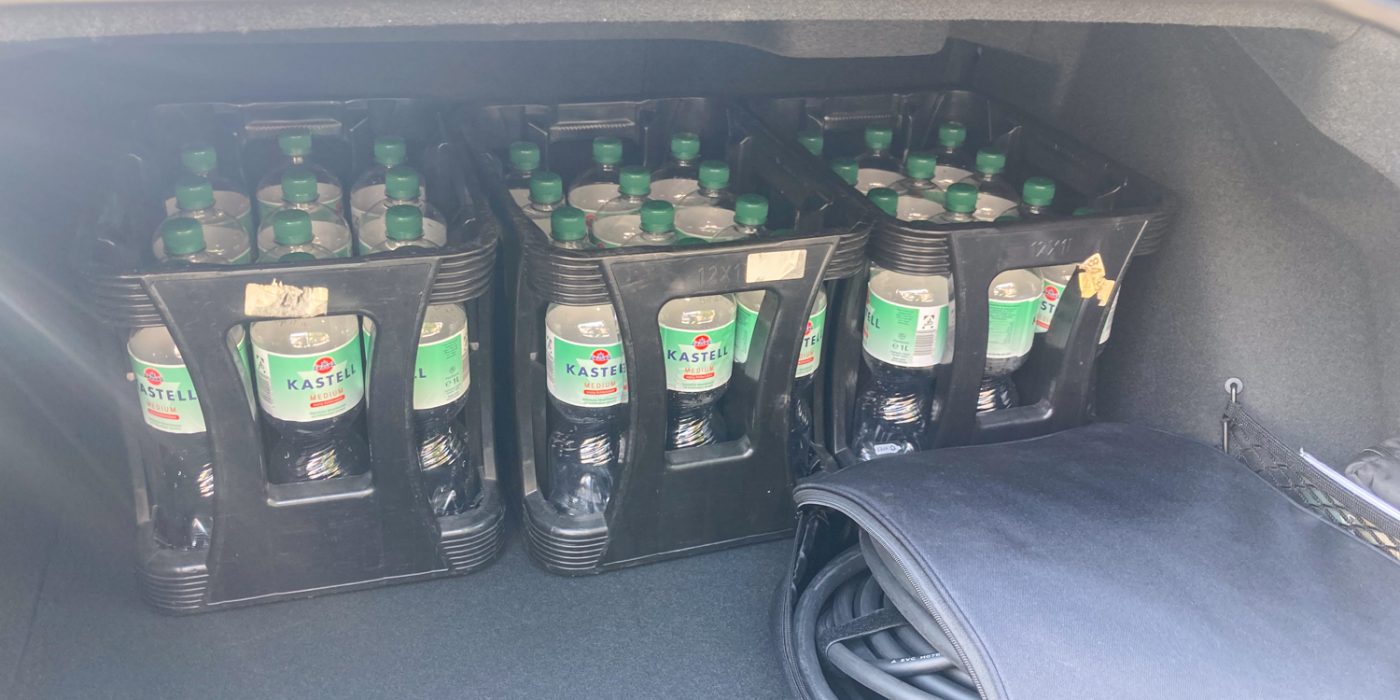
Shortly after the end of our test period, Nio opened two more PSS in southern Germany, so there are currently seven swapping stations in operation in the country. More stations are currently being built – Nio has already secured 50 more locations to construct new battery exchange stations and signed the corresponding contracts. So, the network is growing. But it will take time before it is so dense that long distances are possible without detours to suitably located PSS. And what use are two PSS along the A8 to Stuttgart (Zusmarshausen and Ulm-Seligweiler) to a Munich resident, for example, if the car can easily get to Stuttgart without changing batteries?
In Munich itself, however, there is no way to quickly change the battery. That is only possible again in Regensburg. And even if a PSS can be reached along the route without a detour, you should arrive there with an empty battery. Because replacing a battery that is still 50 per cent charged (you have paid for the electricity) with a battery that is 90-100 per cent charged just to save a few minutes is expensive in the long run. And if you are on holiday with a trailer (up to 1,400 kilograms, 100 kilograms drawbar load) or roof box (up to 75 kilograms), the PSS cannot be used without further ado.
In other words, you will have to rely on charging stations for quite a while to get around with the ET5 (and other Nios). If you have your own AC charging point – be it the wallbox in your garage at home or the company charging infrastructure at work – you can supply the battery with 11 kW of power and charge the car completely overnight (or if the battery is not completely empty) during working hours. For most commutes, one charge should be enough for almost a week, but for frequent drivers, the wallbox must be used more often.
38 minutes charging time, maximum 123 kW charging power
On the road, however, it will probably be the fast charger. Since the ET5 we tested charged at the EnBW Hypercharger with a maximum of 123 kW, the standard charging process from 10 to 80 per cent took 38 minutes. On one hand, this is a few minutes longer than other 400-volt models with a 100-kWh battery (e.g. Mercedes EQS or BMW iX). On the other hand, given that the platform has been optimised primarily for battery swapping, it is still bearable. And according to Nio, Chinese customers rarely use fast chargers, but either charge at home or use battery swapping, which is much more common there. It’s only a few more minutes, but it’s still something to consider when deciding whether to buy or lease. The Hyundai Ioniq 6 mentioned above also has a practical range of up to 400 kilometres, but the battery can be charged from 10 to 80 per cent in half the time at the fast charger. To be fair, the Hyundai with a 77.4 kWh or the ID.7 Pro with a 77 kWh battery (which is not much cheaper than the Nio with a purchased 75 kWh battery) should be compared to the 75 kWh ET5 – but we do not have any charging data that we measured ourselves. But the difference between the ID.7 (30 min) and the ET5 with 100 kWh is relatively small. However, looking into the future with the 4C battery announced by CATL (which can be fully charged in 15 minutes), one may question the whole battery swapping system – but that is not what this vehicle test is about.
The decision to drive a Nio should not be made solely on the basis of battery swapping. Because even with a permanently installed battery (following the optional battery purchase), the ET5 is simply a good car in many respects. The fact that the saloon is already based on the second generation of technology from a relatively young company, makes its relatively mature state all the more remarkable. If you were to remove the logos and ask passers-by about the car, few would reckon that it was built by a startup. Except for a few details, the ET5 appears mature and well-thought-out.
One example is the choice of materials in the interior: Recycled plastics are used in numerous places. The centre console’s and door panel’s material is even supposed to have an antibacterial effect and thus be more hygienic. It also looks chic, no question. But when you touch it, it feels like hard plastic and doesn’t quite do justice to the rather cosy lounge character that the interior is supposed to offer. On the other hand, the seats are comfortable, offer sufficient lateral support and pamper the back with heating, cooling and massage functions. We would not recommend the beige interior: Although the seat surfaces in the test car still looked good after a few thousand kilometres, the seat belts already had stains and signs of wear that could apparently no longer be removed.
In addition, the test revealed surprisingly few charging options for mobile devices in the interior – even though Chinese customers are said to always have their smartphones within reach. The centre console has an inductive charging cradle (but smartphones should not be too big), a USB-C port, and another option for rear-seat passengers – Rather meagre for a modern five-seater. And the cupholder in the centre console is not particularly flexible for different bottle and cup sizes. The storage compartments in the doors are also relatively small.
Even the weakest Nio has power
It would be an advantage if all the items in the ET5 could be well stowed away, because if you fully press down the accelerator pedal in the appropriate mode, it feels like even more than the 360 kW (or 490 hp in the old world) on paper would suggest. In Sport Plus mode, the ET5 hits the triple-digits after just 4.0 seconds. And, thanks to relatively grippy brakes (with red-painted brake callipers on the test car), it is probably back from 100 to zero kph in the same amount of time – but to be fair, we didn’t measure it.
During the test, however, it was not so much the sheer power of the drive that caught our attention, but rather the rounded tuning. Despite the enormous acceleration, the power can still be regulated precisely. At the same time, each driving mode is harmonious and, above all, tuned in a sensible gradation – in many cars, switching from Eco to Comfort or Sport minimally changes the accelerator pedal curve, the steering servo support and, if available, the damper setting. Nio, however, chose to strongly differentiate the driving modes. Even in Sport mode, the drive is tuned a little more gently. Here, the ET5 needs 5.9 seconds from 0 to 100 kph. In Comfort mode, the EV needs 7.9 seconds, and in Eco mode, the standard sprint takes 9.9 seconds. That distinguishes the ET5 from an ambitious sports car to an average family saloon – and the software is neatly tuned in each mode.
The differences in the chassis and steering are not as significant, but still noticeable. The steering offers sufficient feedback and precision in the sporty settings. The suspension could cushion some bumps better in everyday use, especially coarser ones. However, the springs and dampers are very well-adjusted if you are more interested in a sporty driving style. Combined with the Michelin sports tyres on the 20-inch rims, you rarely feel you are driving a 2.1-tonne saloon.
The software needs some fine-tuning
Despite the battery-electric platform, the ET5 remains a rather conventional sedan, especially regarding space. There is no frunk under the long front bonnet, legroom in the front and rear is okay (rear passengers cannot slide their feet under the front seats), and the boot is rather challenging to access with its small notchback opening. The space in the load compartment is adequate (386 litres), but not record-breaking. However, visibility is superb thanks to the low windscreen root – whether driving in the city or heading for the next curve.
Two points that we still need to address but that are very important, are the operation via the twelve-inch touchscreen and the assistance systems. Because with software like this, things can and do change quickly. Nio claims to have carried out over 80 FOTA (firmware-over-the-air) updates in the past five years, adding more than 450 new functions and over 600 function updates. The manufacturer distinguishes the FOTA update from the SOTA, or “software-over-the-air.” FOTA updates can also improve system-level functions, such as performance, vehicle control systems, and driving comfort and driver assistance systems. On the other hand, SOTA updates are navigation updates or improved graphics. For the future, Nio announces that it will probably offer a SOTA update once a month in Europe, and the firmware will be updated once a quarter via a FOTA update.
The operation and assistant systems usually work well in the status quo (sometimes too well, more on that in a moment), but it would be good to fine-tune one or two areas with an update. One example would be the font, which is sometimes a little small on the touchscreen or cockpit display or difficult to read due to the typography. Whether you are supposed to leave the motorway in 4.7 or 47 kilometres makes a big difference. A shortcut for the massage seats would be nice, since you usually activate them while driving. It is awkward to have to do that via the menu. Personally, I’m not particularly eager to talk to my car via a voice assistant, especially when passengers are on board.
When the well-meaning assistant gets on your nerves
One assistance system immediately comes into play: the driver drowsiness detection recognises when you take your eyes off the road for too long (and look at the displays, for example). However, the assistant does not react with a “beep” but informs the driver via the Nomi voice assistant that he or she is not paying enough attention. I admit: now and then, I felt caught red-handed for having been distracted for too long. But for the most part, the alarm was unfounded – for example, because I was observing the surrounding traffic via the exterior mirrors. And a safety assistance system that you learn to ignore over time no longer brings the intended benefit. A little fine-tuning and fewer triggers would make the assistant more credible. Although you can switch it off in the menu, it is reactivated every time you drive.
The speed alert system could also use some fine-tuning. Although the camera detects traffic signs accurately, the Nio apparently also uses map material in the background. And that is sometimes outdated. The car beeps and demands 80 kph, although this was due to a roadworks site that has long since been removed – and 120 kph is now permitted. And even if the semi-autonomous pilot system lets the Nio control the speed itself when the system detects and sets 100 kph, the car beeps at the driver four times when the speedometer briefly jumps to 101 kph during a slight downhill passage – at which point the driver has done nothing, is annoyed and switches off the assistant.
Lidar system provides precise representation of traffic
Since we mentioned the semi-autonomous pilot system, the basic function (keeping in lane and reacting to traffic) worked very well. In our test on fairly well-built roads, the Nio reliably detected the markings and stayed in the lane. The Nio’s cockpit display shows the surrounding traffic similarly to Tesla. However, Nio’s lidar system displays and recognises traffic more precisely than Tesla’s camera-based recognition. What conclusions the respective software draws from the information is another story.
That leaves the price issue: Nio has priced the ET5 at 47,500 Euros. However, this sum is not comparable with the competition since the battery is not included. The purchase price for the 75 kWh battery is 12,000 euros, which results in a vehicle price of 59,500 euros. The larger 100 kWh battery comes in at 21,000 euros. With a purchased battery, however, one cannot use the battery exchange stations, as this is only possible with a rented battery. The reason for this is that if you buy “your” battery, it is also the customer’s property. It is then legally complicated to exchange it for another battery (in a different condition).
The small battery costs 169 euros per month to rent, meaning that for 71 months, it is cheaper to rent than to buy. With the 100 kWh battery, it takes 72.6 months until the financial break-even. So, if you plan to keep the battery for a shorter period, renting it can be cheaper, even if you can’t or don’t want to use the battery exchange stations. And vice versa: Buying the battery could be cheaper if you plan to use the car for much longer.
Conclusion
The ET5 is an interesting addition to the electric mid-range. Nio offers some new approaches, and the “classic automotive engineering” in terms of drive and chassis tuning are quite good. Regarding software, the Chinese can and will undoubtedly have to step up their game; after all, they opened their own software development centre in Berlin in July.
In terms of price, some customers will consider the ET5 to be overpriced compared to the Tesla Model 3. Compared with the VW ID.7 and a well-equipped Hyundai Ioniq 6 with a large battery, things look better for the Nio – no one else in its class offers 100 kWh. The ET5 Touring is likely to be interesting, as it could steal a customer or two away from the upcoming ID.7.
Translation by Carla Westerheide




0 Comments